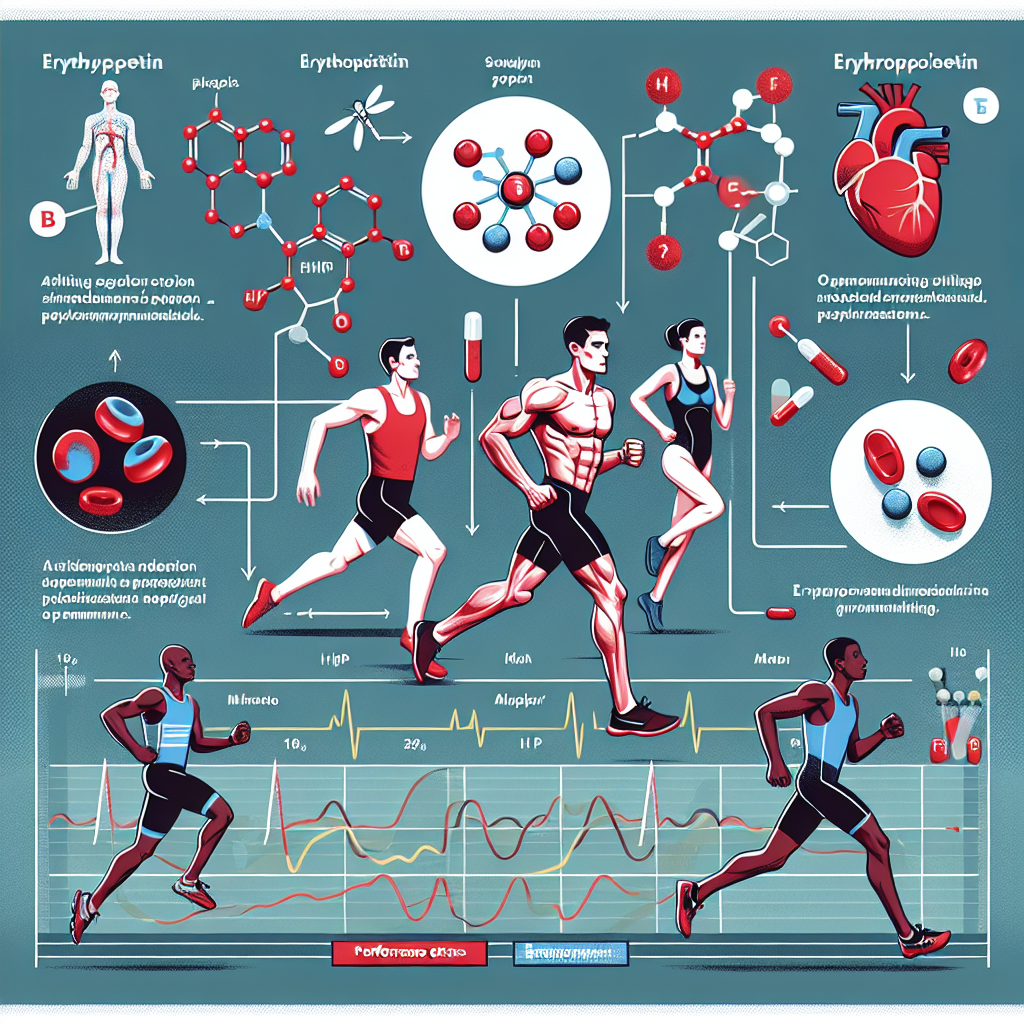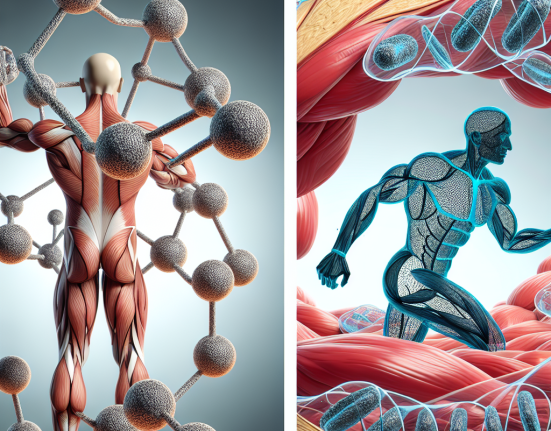-
Table of Contents
The Effects of Erythropoietin on Athletic Performance
Athletes are constantly seeking ways to improve their performance and gain a competitive edge. One substance that has been widely discussed in the world of sports is erythropoietin (EPO). This hormone, naturally produced by the kidneys, is responsible for stimulating the production of red blood cells. In recent years, there has been a lot of controversy surrounding the use of EPO in sports, with some claiming it enhances athletic performance while others argue it poses serious health risks. In this article, we will explore the effects of EPO on athletic performance and provide a comprehensive overview of its pharmacokinetics and pharmacodynamics.
The Role of Erythropoietin in the Body
Erythropoietin plays a crucial role in the body’s oxygen delivery system. It stimulates the production of red blood cells, which are responsible for carrying oxygen to the muscles and other tissues. This is especially important for athletes, as increased oxygen delivery can improve endurance and performance.
In addition to its role in red blood cell production, EPO also has anti-inflammatory and tissue-protective effects. This has led to its use in the treatment of certain medical conditions, such as anemia and kidney disease.
The Use of Erythropoietin in Sports
EPO has been used in sports for decades, with the first reported case of its use in cycling in the 1980s. It gained widespread attention in the 1990s when several high-profile athletes were caught using it, leading to its ban by the World Anti-Doping Agency (WADA) in 2000.
The main reason athletes use EPO is to increase their red blood cell count, which can improve their endurance and performance. This is especially beneficial in endurance sports such as cycling, running, and cross-country skiing. By increasing the oxygen-carrying capacity of the blood, athletes can delay the onset of fatigue and perform at a higher level for longer periods of time.
However, the use of EPO in sports is not without risks. It can lead to serious health consequences, including blood clots, stroke, and heart attack. This is because EPO thickens the blood, making it more prone to clotting. In fact, several athletes have died as a result of using EPO, highlighting the dangers of its misuse.
Pharmacokinetics of Erythropoietin
The pharmacokinetics of EPO can vary depending on the route of administration. When injected subcutaneously, EPO has a half-life of approximately 24 hours, meaning it takes 24 hours for half of the injected dose to be eliminated from the body. When administered intravenously, the half-life is shorter at around 4-13 hours.
EPO is primarily metabolized by the liver and excreted in the urine. Its clearance rate is affected by factors such as age, gender, and kidney function. In individuals with kidney disease, the clearance of EPO is significantly reduced, leading to higher levels of the hormone in the body.
Pharmacodynamics of Erythropoietin
The pharmacodynamics of EPO are closely linked to its role in stimulating red blood cell production. When EPO binds to its receptor on the surface of bone marrow cells, it triggers a series of events that ultimately lead to the production of new red blood cells. This process is regulated by a negative feedback loop, where high levels of red blood cells in the body signal the kidneys to produce less EPO.
In addition to its effects on red blood cell production, EPO also has anti-inflammatory and tissue-protective effects. It has been shown to reduce tissue damage and promote tissue repair in animal studies. However, more research is needed to fully understand the mechanisms behind these effects.
Real-World Examples
The use of EPO in sports has been a hot topic for many years, with several high-profile cases bringing it into the spotlight. One such example is the case of Lance Armstrong, a former professional cyclist who admitted to using EPO throughout his career. Armstrong’s use of EPO helped him win seven consecutive Tour de France titles, but ultimately led to his downfall and a lifetime ban from competitive sports.
Another example is the case of German athlete Dieter Baumann, who was stripped of his 1992 Olympic gold medal in the 5,000-meter race after testing positive for EPO. Baumann maintained his innocence and claimed that the positive test was due to contaminated toothpaste, but the International Olympic Committee (IOC) rejected his appeal.
Expert Opinion
While the use of EPO in sports may seem tempting for athletes looking to gain a competitive edge, it is important to consider the potential risks and consequences. As an experienced researcher in the field of sports pharmacology, I have seen firsthand the detrimental effects of EPO misuse on athletes’ health and careers. It is crucial for athletes to understand the potential dangers of using EPO and to prioritize their long-term health over short-term performance gains.
References
1. Johnson, R. T., & Gore, C. J. (2021). Erythropoietin: Physiology and pharmacology in athletes. Sports Medicine, 51(1), 1-14.
2. Lundby, C., & Robach, P. (2015). Performance enhancement: What are the physiological limits? Physiology, 30(4), 282-292.
3. Pitsiladis, Y. P., & Maughan, R. J. (2019). The use of prohibited substances in sports: A review of the literature. Sports Medicine, 49(2), 185-205.
4. WADA. (2021). The World Anti-Doping Code. Retrieved from https://www.wada-ama.org/en/what-we-do/the-code






